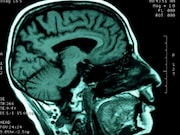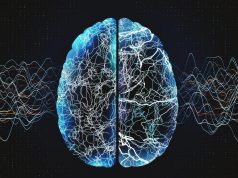Physicians using CAD can detect growth of low-grade gliomas at significantly smaller volumes
THURSDAY, June 20, 2019 (HealthDay News) — Computer-assisted diagnosis (CAD) can help physicians detect growth of low-grade gliomas, according to a study published online May 28 in PLOS Medicine.
Hassan M. Fathallah-Shaykh, M.D., from the University of Alabama at Birmingham, and colleagues compared growth detection of low-grade gliomas by seven physicians aided by the CAD method with retrospective clinical reports. Tumors from 63 patients in 627 magnetic resonance imaging scans were digitized (34 grade 2 gliomas with radiologic progression and 22 radiologically stable tumors). The CAD method included tumor segmentation, computing volumes, and indicating growth with the online abrupt change-of-point method, which only considers past measurements.
The researchers found that the median time to growth detection was 14 months for CAD versus 44 months for current standard-of-care radiologic evaluation in 29 of 34 patients with progression. Accurate detection of tumor enlargement was possible with a median of 57 percent change in tumor volume using CAD compared with a median of 174 percent change of tumor volume using standard-of-care clinical methods. CAD facilitated detection in 13 of 22 patients in the radiologically stable group.
“CAD could avoid unpredictable delays and improve the determination of efficacy of new therapeutic interventions,” the authors write. “Furthermore, early growth detection holds the potential of lowering the morbidity, and perhaps mortality, of patients with low-grade gliomas, a possibility that needs to be tested in prospective studies.”
Two authors disclosed financial ties to the biopharmaceutical industry.
Copyright © 2019 HealthDay. All rights reserved.








